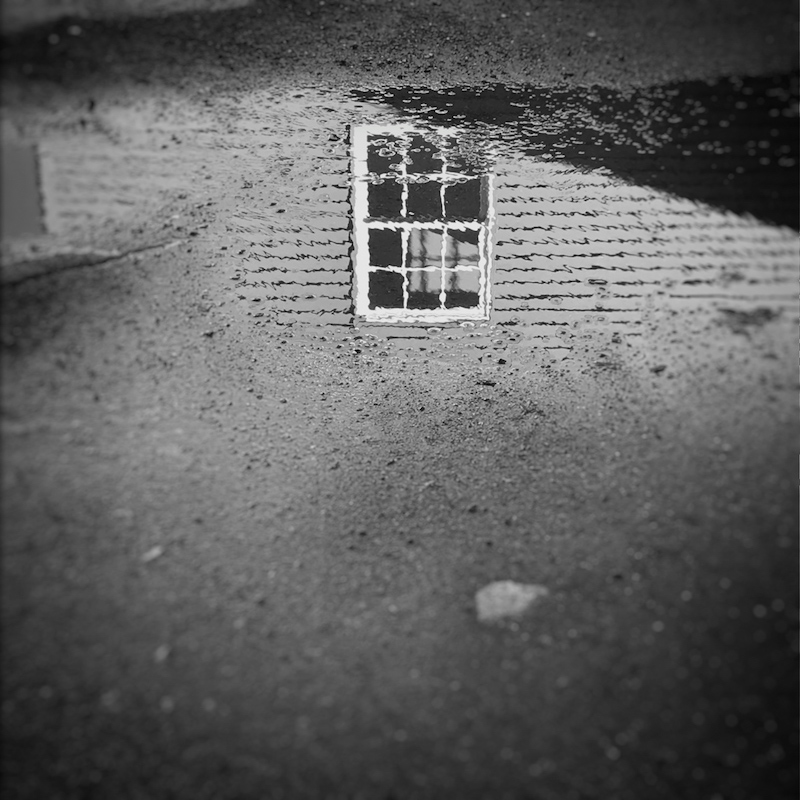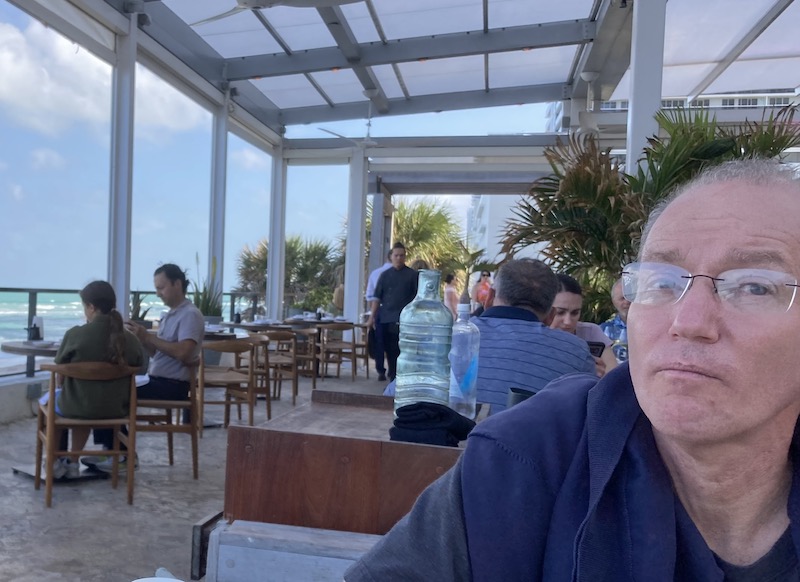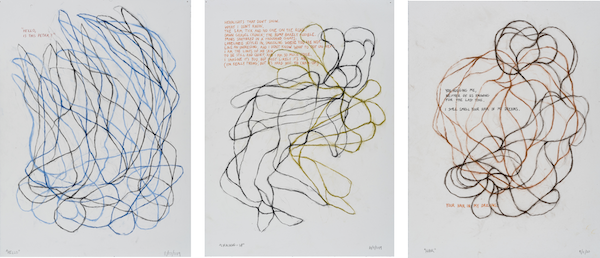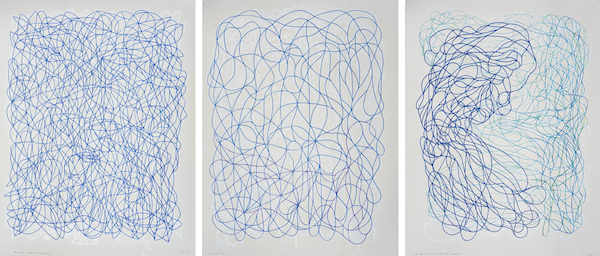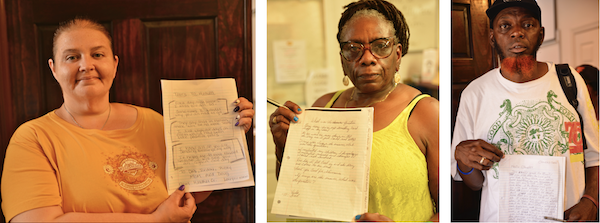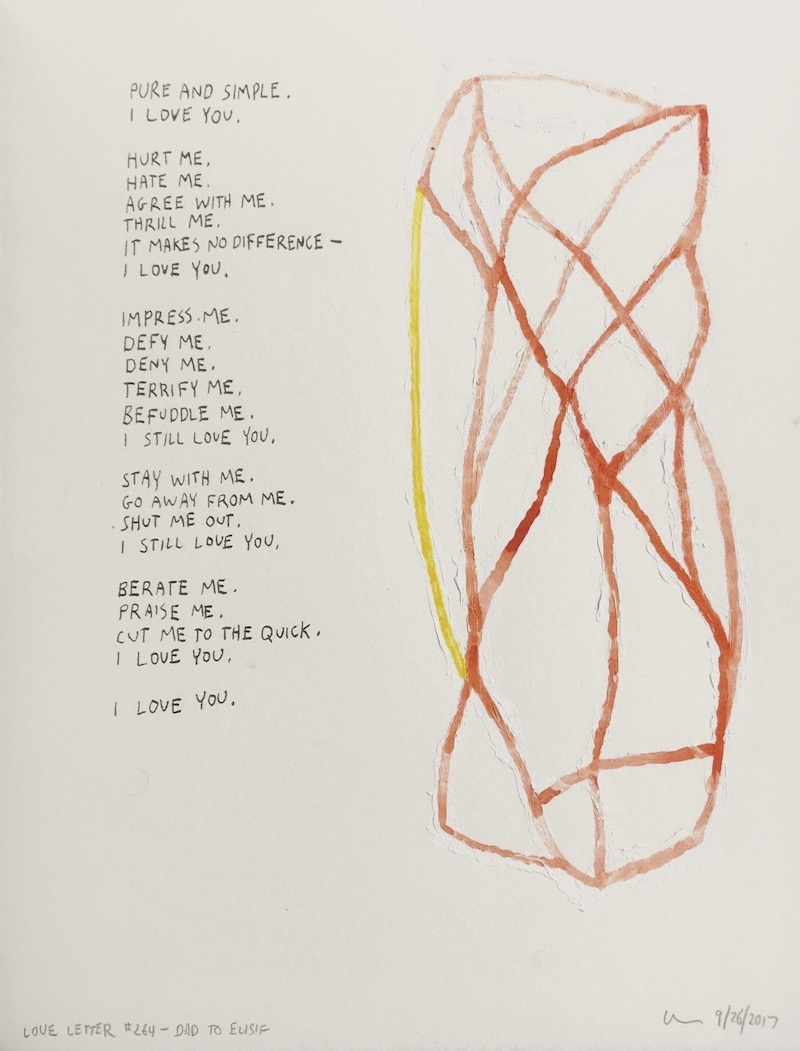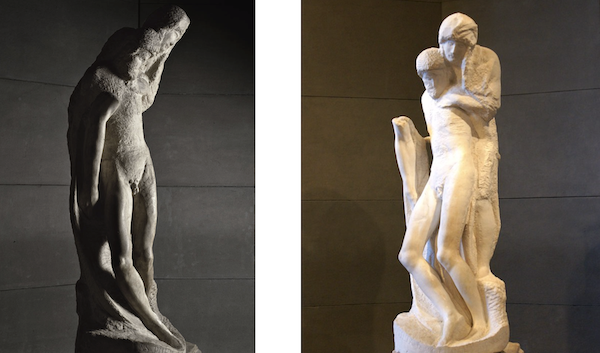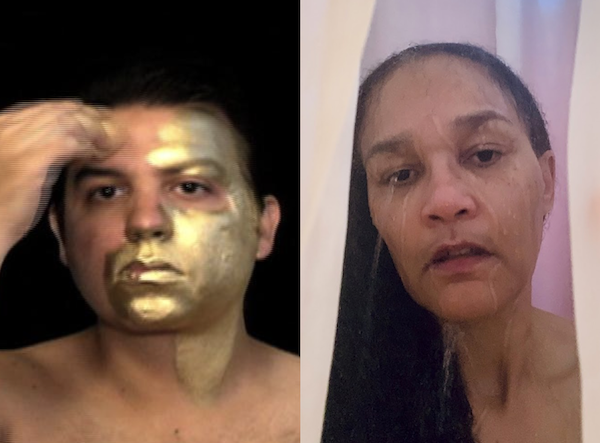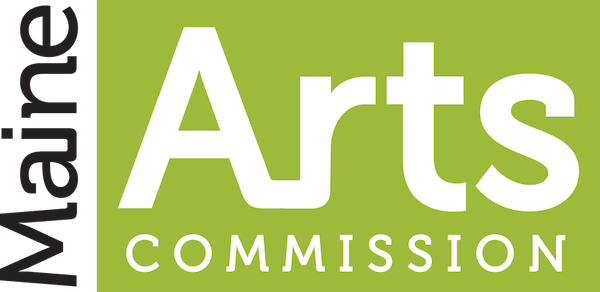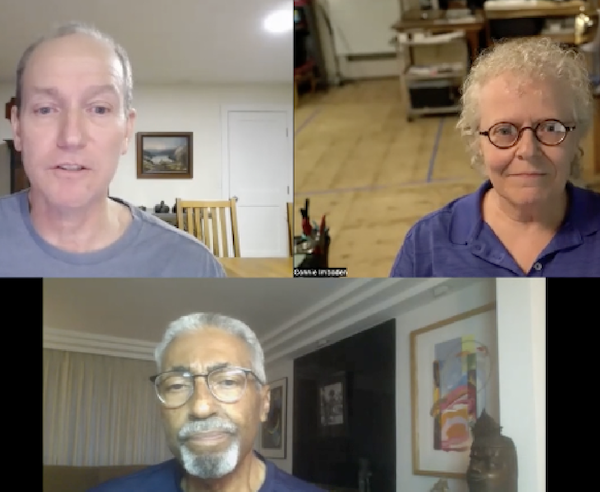Cameo
Elizabeth Greenberg
To hear silence is to find stillness in the midst of the restlessness that makes creative life possible and the inescapability of death acceptable.
– Mark C. Taylor, Seeing Silence
Before the world awakes, Elizabeth Greenberg is out the door with her camera. What she captures through her lens is as unanticipated as it is beautiful.
Take for example Untitled, 2017, the photograph shown above, a work that dares to flirt with cliché (clapboard home in picturesque reflection) only to transcend trope with the unexpected. For the longer we look, the more we see: lights and darks along the top in startling geometry, the jagged black shapes like premonitions of fractured window shards; a small rogue stone alone and seemingly errant in the pebbled ground below – is it too a harbinger of shattered glass?
Danger lurks.
What at first blush appears almost quaint quickly becomes not so, for the seductively lush pre-dawn Maine image contains the ghost of something edgier. The smell of loss. The aroma of memory. A whiff of disaster.
The work carries surprise – and for Elizabeth, being a photographer is all about surprise.
“Even the most familiar places in my home and around the rural neighborhood in which I live so often reveal to me mysteries as clues, bridges between the past and the present, the ordinary and the remarkable,” she says.
And so Elizabeth is up each morning, seeking daily in light and pattern, shape and shadow, what without attentiveness we might otherwise miss: the shimmer of a tree’s reflection in water caught between frozen and liquid; the contrasting penumbra of light from a cracked door and a window’s scrim; rising specters in sun-soaked sea smoke. Nostalgia and dream, magic and fancy – otherworldly spirits right here.

Photography is a solitary practice for Elizabeth, one in which she is immersed mostly in a welcome silence.
“I love my solitude,” she says.
As Provost for the Maine Media Workshop & College in Rockport, Maine, she gets little quiet during the day (“I am always busy with people”). Before making time for her art, Elizabeth was not happy.
“I was angry all the time.”
That began to change when one morning in 2016 she was startled by the sight of rippling morning light coming through an antique glass window in her home.
“It was spectacular, and I had never seen it this way before, despite having lived in the house for 16 years,” she says. “The light I noticed that day seemed to reference something no longer there physically, yet intensely palpable in its absence. I ended up chasing light around the house all winter long. When winter was over, I went outside, and from there decided to keep doing it every day. It pretty quickly turned into a way to wake up into the world and be true to myself before the day’s demands took over.”
Though the nature of Elizabeth’s art process is relatively new, her subject matter is not.
“I was 14 years old when I knew I wanted to be a photographer. Even then, I would take my camera to quiet spaces – empty buildings, alleyways.”
Then as now, she was drawn to spots rich in haunting stillness, replete with hints of invisible history or hushed memory.
“The words I apply to my photographs are ‘melancholy,’ ‘nostalgia,’ ‘mournful,’ ‘yearning’ – I have a real desire in my work to find evidence for who or what is gone.”
Elizabeth’s ongoing search for such clues is rooted in part in her life experience.
“Losses in my family when I was young were formative events in my life,” she says.
Elizabeth is quick to note she is not specifically seeking her own loved ones in her dawn sojourns. Nonetheless, camera in hand, she is questing – hunting for glints of a world rich in possibility, steeped in greater promise than the stark reality of loved ones dying might otherwise suggest.
In her art, spirits abide – each successful image an ode to all the accident and wonder of our unrelentingly beautiful world.
Elizabeth Greenberg is an artist and educator living on the coast of Maine. Her work has been exhibited across the country and she has curated numerous exhibitions. Currently, Elizabeth is the Arnold and Augusta Newman Provost at Maine Media Workshops + College. Her three photographs above are all untitled, and were taken (left to right) in 2020, 2022, and 2022.

